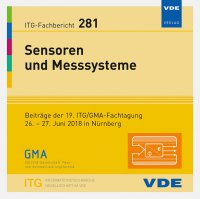High Sensitive Fluxgate Sensor using new processing method to detect the output signal from the excitation coil
Conference: Sensoren und Messsysteme - 19. ITG/GMA-Fachtagung
06/26/2018 - 06/27/2018 at Nürnberg, Deutschland
Proceedings: Sensoren und Messsysteme
Pages: 4Language: englishTyp: PDF
Personal VDE Members are entitled to a 10% discount on this title
Authors:
Rybalko, Ruslan; Hofmann, Christian (Fraunhofer Institute for Integrated Circuits, Erlangen, Germany)
Haueisen, Jens (Institute of Biomedical Engineering and Informatics, Ilmenau, Germany)
Abstract:
The typical low-noise fluxgate magnetometer consists of an excitation and a sensing coil. To achieve a high sensitivity of the fluxgate, the sensing coil is wound with several thousand number of turns. It decreases the working frequency and makes the design more complex. The special sensor’s design as a single coil solution has a significant effect on its functionality. The absence of a sensing winding, which is present in a classical fluxgate sensor, makes it possible to simplify the requirements for input signals, reduce thermal noises of the sensor, and reduce its geometric dimensions. The measurement of the signal is performed directly on the excitation coil. When the magnetometer’s core is saturated, a voltage difference appears in the coil in proportion to the applied external magnetic field. Connected to the excitation coil a differential amplifier measures the difference between the currents flowing through the winding. Accordingly, the output signal of the differential amplifier reflects the process of changing the differences of the magnetic fields appearing in the core. The proposed method allowed increasing the sensitivity of the sensor several times. It made possible to measure the magnetic fields in the range 10-10 - 10-11 T.


